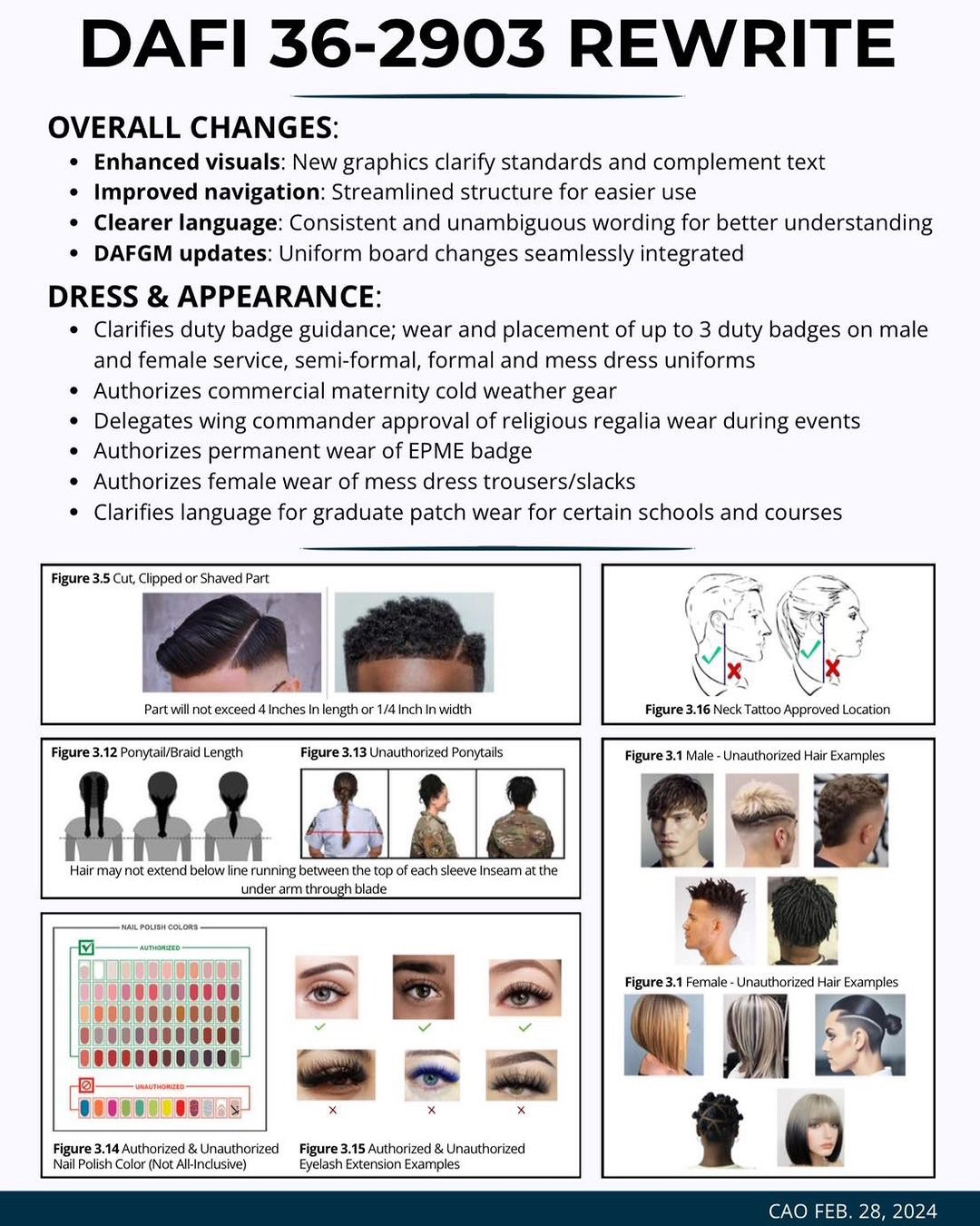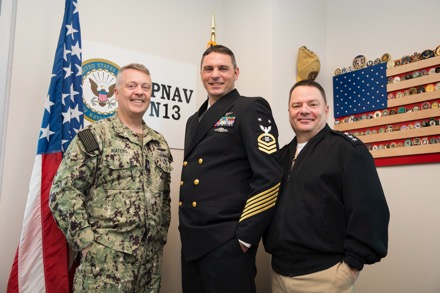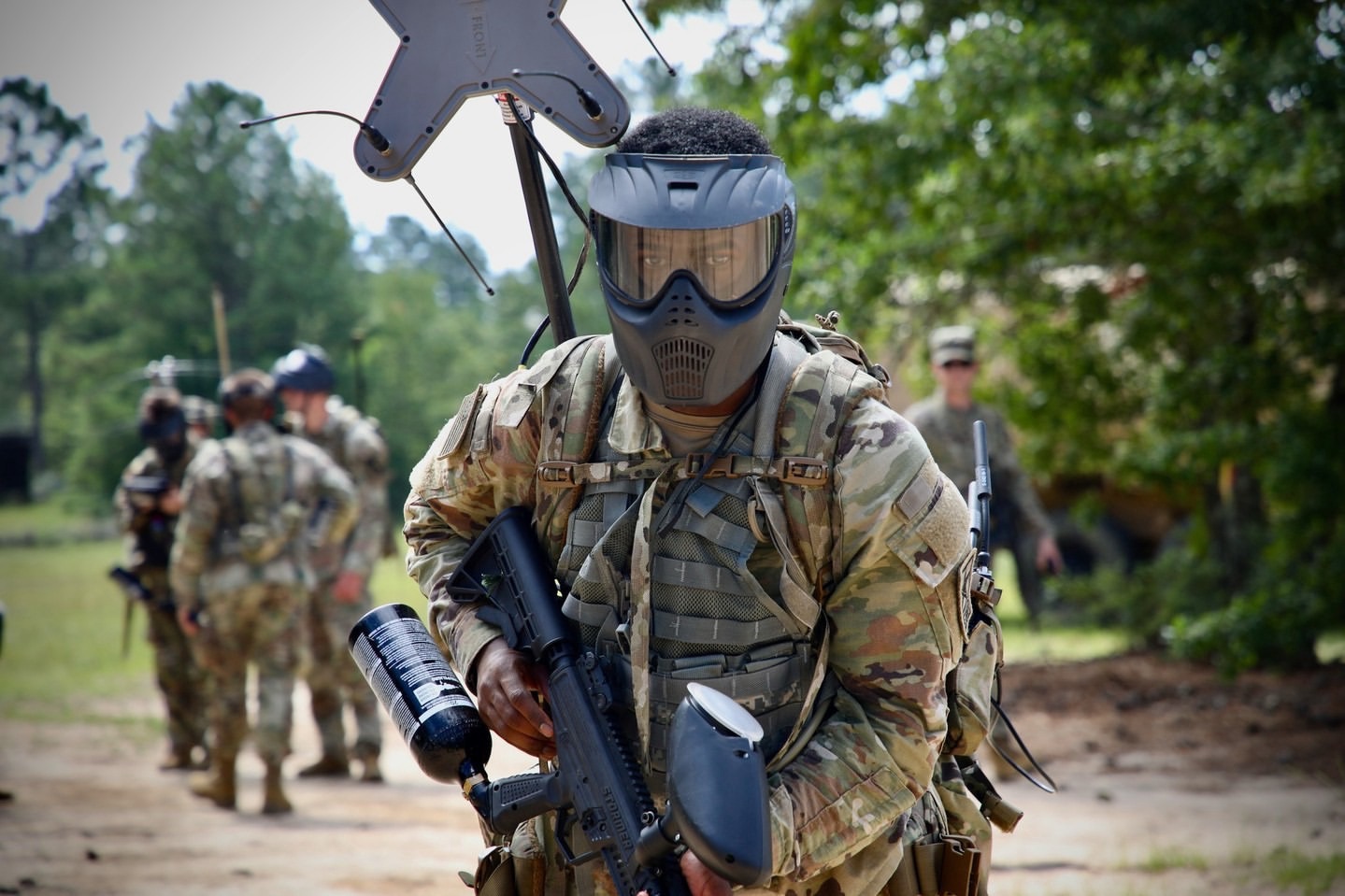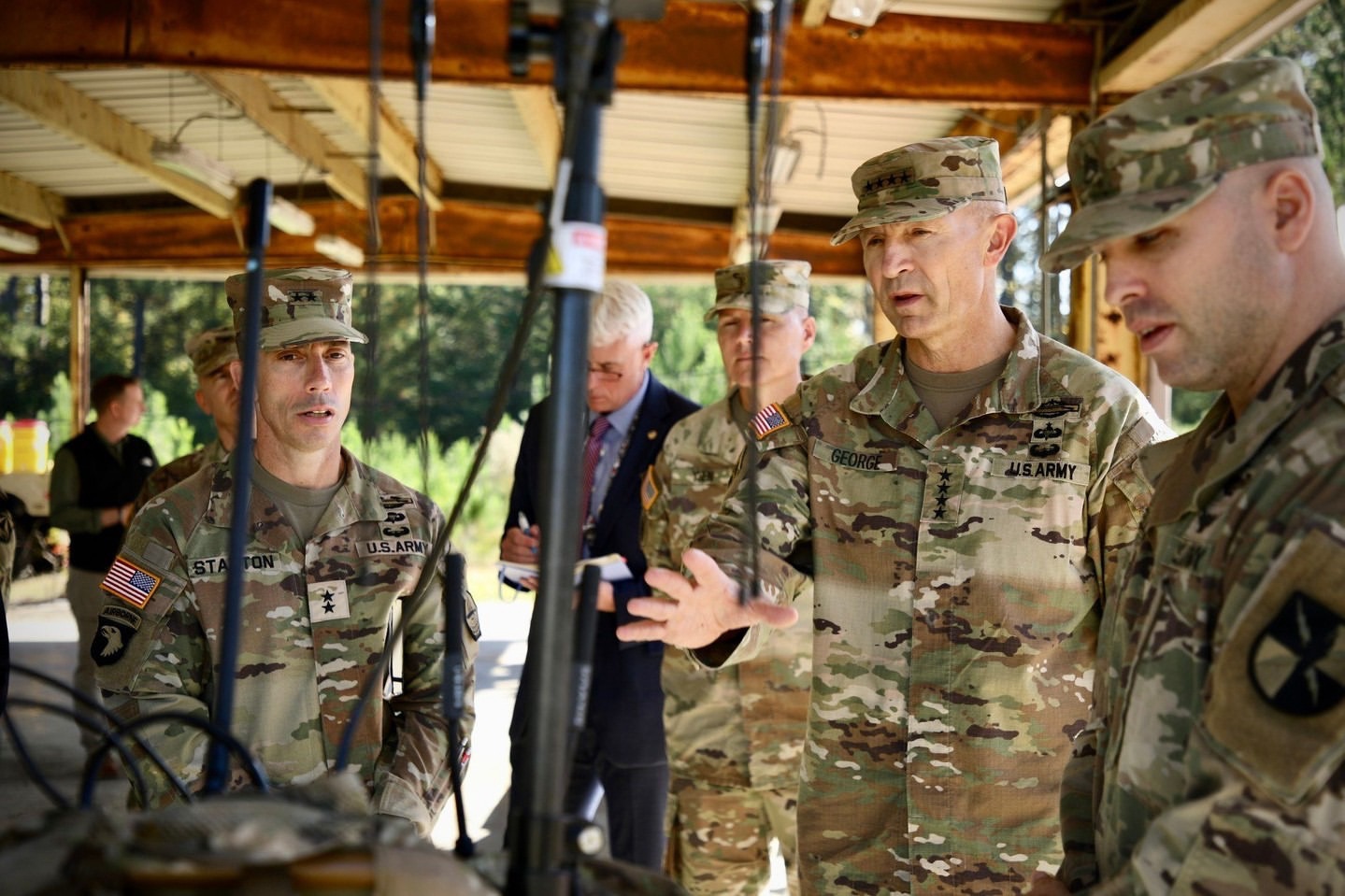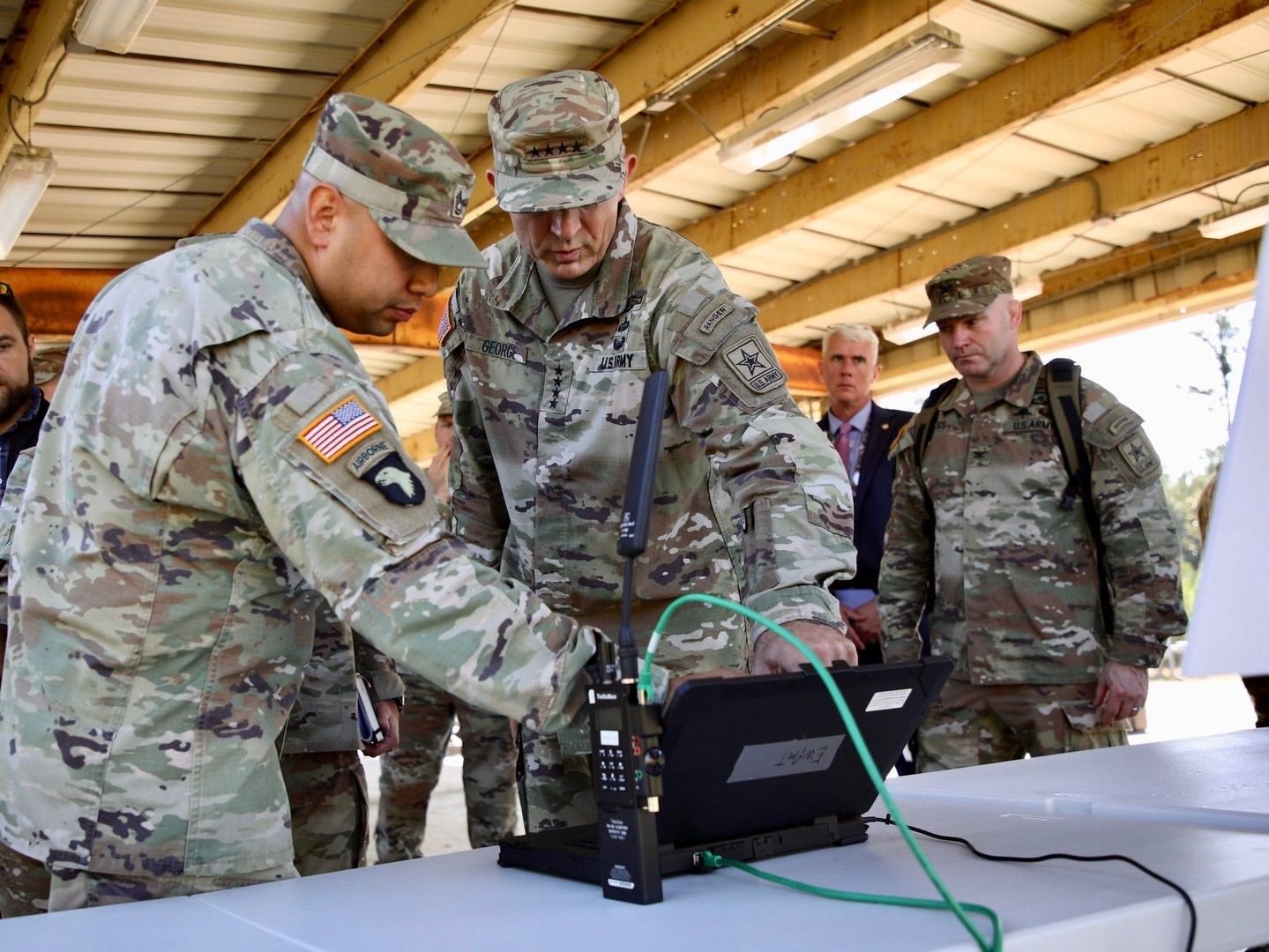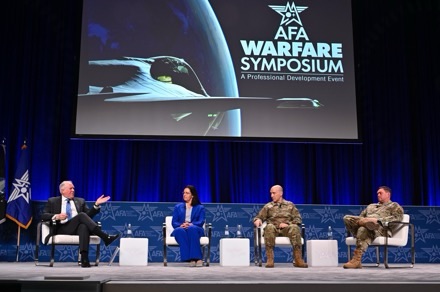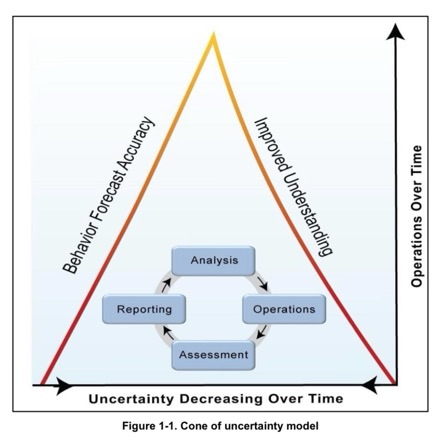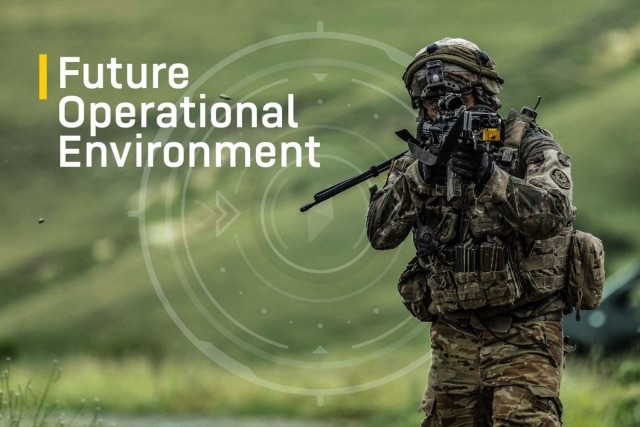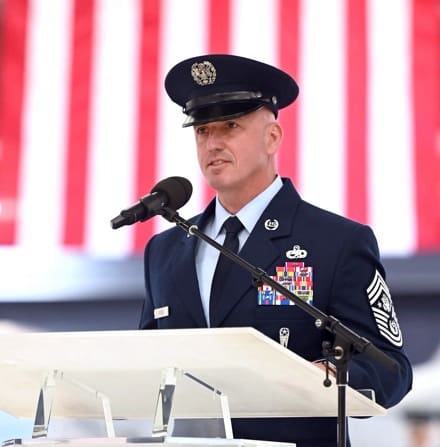
JOINT BASE ANDREWS, Md. (AFNS) —
Chief Master Sgt. David A. Flosi was formally installed March 8 as the 20th Chief Master Sergeant of the Air Force.
In remarks after the formal “Change of Responsibility” ceremony in which he assumed the job from retiring Chief Master Sgt. of the Air Force JoAnne S. Bass, Flosi emphasized both the opportunity before him and what it means to the Total Force at a time of dramatic change and challenge across the service.

“As I assume this role, I’m aware of the challenges ahead,” Flosi said. “We live in a rapidly evolving world, where new threats emerge with alarming frequency, and the demands on our Air Force continue to grow.
“While demanding, I am confident in our ability to rise to the occasion. I am confident because over the course of my career, time and time again, I have witnessed the dedication and professionalism of our Airmen,” he said.
Flosi’s installation as the highest-ranking enlisted noncommissioned officer in the Air Force completes a total overhaul of senior military leaders for the service. Gen. David Allvin was installed as Air Force chief of staff on Nov. 2 and Gen. Jim Slife officially became Air Force vice chief of staff on Dec. 29.
All three senior leaders, along with Department of the Air Force Secretary Frank Kendall, will be instrumental in successfully establishing far-reaching plans to “reoptimize” the Air Force to better confront China and other modern-day adversaries.
Allvin stressed that effort in welcoming Flosi during the dignified ceremony, which also included comments from Gen. CQ Brown, Jr., chairman of the Joint Chiefs of Staff and, prior to that, Air Force chief of staff.
“Dynamic, fast-paced environments require agile, determined leadership – that’s exactly what Chief Flosi brings to the fight,” Allvin said. “We’ve got work to do, and I know Chief Flosi is ready to move out on reoptimization to enhance our readiness and mold our one Air Force.”

In his remarks, Kendall offered a glowing tribute to Bass and provided clear guidance for what he expects from Flosi.
Bass, he said, “has served over 30 years in the Air Force, and we are an infinitely better organization because of your service. She’s been a standout leader at every level.
“Chief Flosi, you’re going to have to fill some pretty big shoes. I look forward to working together and to everything you have to offer. I want to welcome you to an incredible team. … We will need your experience and your perspective to make sure the needs of our Airmen and their families are always at the forefront of all of our efforts,” Kendall said.
Brown echoed Kendall in his praise and admiration for Bass.
“Jo, I’m so glad I hired you. You’ve been an inspiration for me. We were able to break barriers together,” Brown said, referring to their shared histories in which Brown was the first African American to be named Chief of Staff of any branch of the military and Bass’s selection as the first woman to serve as a Service senior enlisted advisor in the history of the United States military.
“You’ve been an inspiration to me. You’ve been an inspiration to our Air Force; you’ve been an inspiration to our nation,” Brown said.
Flosi steps into the job being vacated by the retiring Bass, who senior leaders said set the standard by which all subsequent Chiefs will be judged.
“Chief Bass’s passion for Airmen and their families has defined her time as our 19th Chief Master Sergeant of the Air Force,” Allvin said. “Her tireless work on their behalf has propelled our force forward. Even after over 30 years of dedicated service, I have no doubts that she will continue to be an advocate for Airmen and airpower moving forward.”
In her remarks at the dignified ceremony, Bass highlighted memories and achievements from across her 31-year career. She thanked a list of people who helped her at every point, including her husband Rahn, her parents, and a large group of Air Force colleagues who served as mentors and role models.
She directed special praise to Brown, who selected her to be chief master sergeant of the Air Force when Brown served as chief of staff.
“General Brown, chairman, thank you for hiring me as your wingman and chief. The best words you shared with me were ‘proceed until apprehended.’ And I did just that,” she said.
“I may have gotten apprehended once or twice, maybe three times. In any case, you let me be me and get after the things that matter to our Airmen and their families. It’s been an honor for Rahn and I to serve alongside you and Sharene,” she said.
Flosi’s new job is similar to his previous post but on a larger, more high-profile stage. He arrived at the Pentagon from Air Force Materiel Command at Wright-Patterson Air Force Base, Ohio, where he served as the command chief master sergeant. That role was similar in many respects to the role he now assuming. At AFMC, he is the senior enlisted leader and the primary advisor to the commander on all matters regarding the readiness, training, professional development, and effective utilization of the command’s 89,000 total force Airmen.
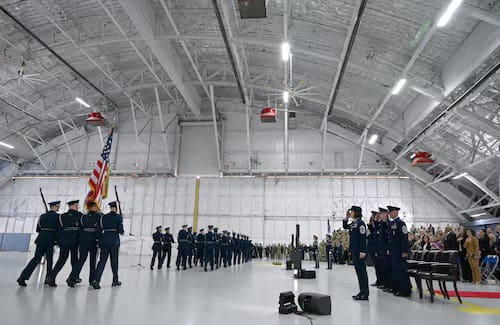
Like his predecessors, Flosi pledged to lock arms with Airmen to help them – and the Air Force – thrive and succeed.
“Today, as we stand on the dawn of a new era, we recognize we are serving at a time of consequence. It is imperative we acknowledge the urgency of the challenges we face,” he said.
Later in his remarks, he added, “Fellow Airmen, my commitment to you and to our Air Force is unwavering. As we navigate the complexities of great power competition and seek to optimize our force, I pledge to be your wingman.”
Prior to his tour at Wright-Patterson AFB, Flosi served as the command chief master sergeant at the Air Force’s Sustainment Center at Tinker AFB, Oklahoma.
Flosi began his Air Force career in 1996 as a nuclear weapons specialist. That focus expanded over the years to include various leadership duties in conventional and nuclear munitions, as well as missile operations, program management and test and contingency operations.
Like Bass and previous CMSAFs, Flosi will be the public face for Air Force personnel to those in all levels of government. He will be a personal adviser to Allvin and other senior leaders, both military and civilian, and will be expected to provide insight on issues regarding the welfare, readiness, morale and proper utilization and progress of the Air Force’s entire cadre of Airmen.
Flosi emerged as the clear choice from a group of the most highly respected, experienced graduated command chief master sergeants from across the Air Force’s global operations, officials said. These leaders were selected based on breadth of experience, recommendations from senior commanders and performance across each candidate’s Air Force career.
Story by Secretary of the Air Force Public Affairs



